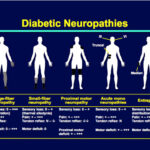What is diabetes?
Diabetes Mellitus ( there is diabetes Insipidus, which is caused by over production of dilute urine due to disorder of pituatary gland ) is a condition caused by either a relative or absolute deficiency of Insulin( produced by the beta cells of the pancreas) which results in increased glucose levels. Type 1 diabetes is when there is an absolute absence of insulin caused by some genetic problems or a destruction of pancreas by some viruses or unknown causes. Type 2 diabetes is caused when there is either not enough insulin to meet the demands or when the insulin is blocked from acting.
Type 1 is usually seen in young people, but can be seen in adults as well. This is less common when compared to type 2 diabetes. There is no treatment yet as successful and effective as insulin injection for those with type 1 diabetes. Research is going on to establish the efficacy of islet cell transplantation and stem cell therapy , but with mixed results.
Type 1 is caused by environmental and genetic factors. Destruction of the pancreatic beta cells by a viral fever can also cause diabetes. Type 2 is caused by poor lifestyle and resulting obesity.
Certain medicines also can worsen the glucose tolerance. Long term steroid administration, anti psychotic medication, hormones are some of the well known offenders.
Who are to be tested?
- Any person who is above the age of 45 years,
- Those who has a family history of diabetes, high blood pressure , high cholesterol levels, heart attack at an young age
- Those with kidney disease
- Those with unexplained weight loss in spite of good appetite
- Those with increased thirst and urination out of proportion to the environmental changes
- Those with problems with eye sight
- Those with waist sizes above 88 cm for men and 80 cms for women ( this differs from race to race)
- Those who experience long time for healing of small cuts and wounds
- Those with polycystic ovarian disease( small water filled swellings on ovaries seen in young women which can lead to hair growth on face, obesity, irregular menstruation and sometimes infertility)
- women who have had diabetes during pregnancy( gestational diabetes)
- Those recurrent urinary infections or boils on skin
- Unexplained weakness
The extent of the epidemic


 In today`s world things are moving at a fast pace and often we all struggle to keep pace. This leads to unnecessary mental stress, lack of sleep, improper food intake, smoking, alcoholism or other recreational drug abuse, fast food and intake of large quantities of sweetened beverages in the form of fizzy (carbonated) drinks. This habit coupled with lack of exercise or activity has led to the gigantic proportions at which Diabetes is becoming an epidemic. The arrival of fast food( which unfortunately is very tasty and presentable!), processed food, high calorie food have caught on with the young generation in a big way and the parents do not mind as it is readily available and keeps the children happy and content! Large portion size, eating in front of the TV, eating more at night and lack of adequate physical activity are important factors.
In today`s world things are moving at a fast pace and often we all struggle to keep pace. This leads to unnecessary mental stress, lack of sleep, improper food intake, smoking, alcoholism or other recreational drug abuse, fast food and intake of large quantities of sweetened beverages in the form of fizzy (carbonated) drinks. This habit coupled with lack of exercise or activity has led to the gigantic proportions at which Diabetes is becoming an epidemic. The arrival of fast food( which unfortunately is very tasty and presentable!), processed food, high calorie food have caught on with the young generation in a big way and the parents do not mind as it is readily available and keeps the children happy and content! Large portion size, eating in front of the TV, eating more at night and lack of adequate physical activity are important factors.
The main culprits
Automation of chores such as having a remote for almost everything- opening and closing the gates, controlling the television, controlling the music system, the air-conditioners, the blinds of the windows, the watering of the garden, switching on the lights and even cooking has made us all so dependant as well as lazy! We even resort to ordering food or things from the market through the phone rather than walk. How many of us prefer to take the stairs than the lift or the escalator? How many of us prefer to walk rather than drive the car even for short errands? The boom of the computer age has worsened the matters by encouraging the children to play games, study, acquire knowledge, socialize, watch movies all within the confines of their rooms leading to an absence of activity outside in the fresh air and leading to another threat, OBESITY. Of course, they may be exercising their hands, eyes and rain, but that alone is not enough!
It has become so bad that if one does not have these “modern diseases” such as high blood pressure or diabetes, one is labeled abnormal!
Let us sit and recollect that the previous generation ( not so long ago) had mostly naturally available food, had plenty of oily food, had enough of sweets made with sugar or ghee, did not use additives or flavoring agents and still were happy and almost disease free. They used to work hard and walk where possible. Medicines were so few those days and so also were the medical facilities. They used coconut oil, there was almost no taboo food and stress was much less.
We have reached a stage where the inevitable cannot be avoided, but it can be delayed by a sensible lifestyle.
BMI ( body mass Index) >25, fat in diet< 30%, Saturated fat < 10%, increased fiber, physical activity 150 minutes per week. If any one of these goals can be achieved the incidence of diabetes can be lessened by as much as 20%! It is time we started something drastic to grab Diabetes by its roots.
Testing for diabetes
Fasting blood sugar >7.0 mmol/L or 126 mg/dL ( this means a fasting period of 8-10 hours)
A post prandial blood sugar of > 11.1 mmol/L or 200 mg/dL ( 2 hours post meal- some doctors advise an hour and half)
HbA1C of >6.5% ( this test gives an average of 3 months sugar readings)
Please be aware that the fasting and post prandial can be misleading depending on what the patient ate, but the HbA1C will give the overall picture.
Please note that a glucometer checks the glucose level on the capillary blood ( at the finger tips) and in the traditional method, blood is taken from the blood vessel at the hospital or clinic. There will be a difference between the different meters at the same time and also a difference between the reading taken from the finger tip and the blood vessel.
The HbA1C is done every 3 months to assess how one is progressing, but it can be done once in 6 months if the control is excellent.
Pre diabetes
There is a pre diabetes state: if the fasting sugar reading is between 5.6-6.9 mmol/L( 100-125 mg/dL) the patient is labeled as having impaired fasting glucose. If the 2 hour post meal sugar is between 7.8-11 mmol/L(140-199mg/dL) the patient is labeled as having impaired glucose tolerance. If the HbA1C is between 5.7-6.4%, the patient is labeled as having pre diabetes. This means you are not yet a diabetic, but may become one. Usually life style changes are all that matter at this stage. Some doctors prescribe medicines at this stage depending on other factors such as body weight, age, BMI and associated diseases.
Other tests to be done:
Urine sugar estimation is not done these days as much as it used to be done long back. It has become unreliable to monitor diabetes control only on urine sugar levels.
Type 1 diabetics are diagnosed by checking some markers in the blood ( GAD 65, ICA, IAA and C peptide) which will not be normally seen in the blood. This is released by the destruction of the cells producing insulin, the beta cells. C peptide shows how much insulin is being produced by the pancreas.
Other tests of the blood to assess kidneys, liver, lipid profile, urine for protein, check for eyes, heart, feet are to be done periodically to make sure Diabetes has not affected any of these organs.
The eyes ( causing blindness), heart ( attacks ), brain ( strokes or paralysis), kidneys( kidney failure), feet ( numbness or inability to feel or differentiate between hot and cold sensation) and erectile dysfunction in males or infertility among males or females.
Diabetes is the commonest cause of preventable blindness and the commonest cause of amputation ( cutting away an extremity) due to non traumatic causes














